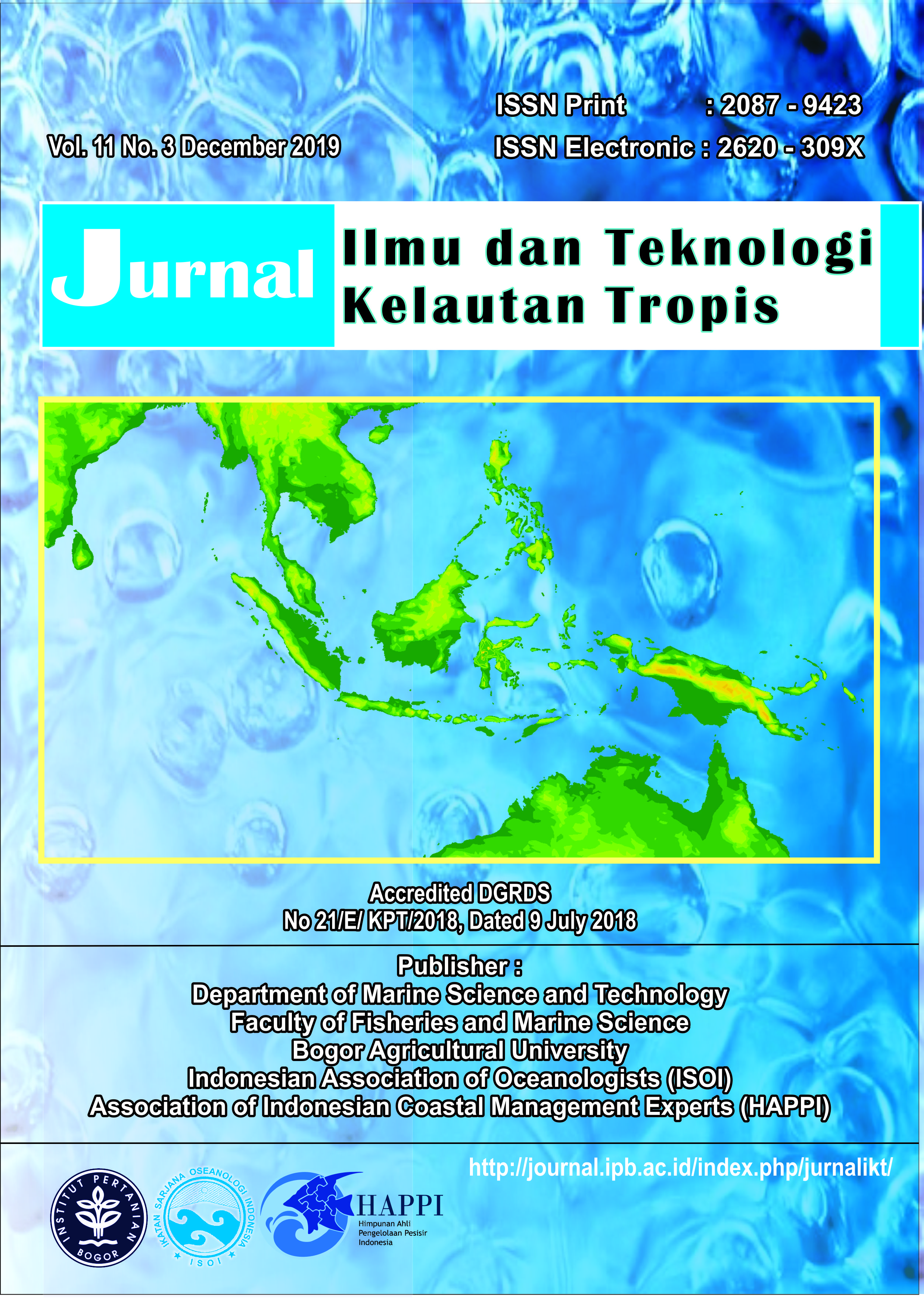STATISTICAL ASSESSMENT OF SEDIMENT GRAIN SIZE AND ITS RELATION WITH SEASONAL AND ANNUAL CLIMATE VARIABILITY IN MUARA GEMBONG, JAKARTA BAY
Abstract
Climate variability affects the properties of marine sediments. One of the sediment properties affected by climate is the grain size. This study is aimed to test the relation between sediment grain size and climate variability using sediment core GM01-2010-TJ22 that was acquired off Muara Gembong, which is part of Citarum river mouth. The samples were acquired in 2010 onboard RV. Geomarin I by Marine Geological Institute (MGI). Grain size analysis was conducted by Mastersizer 2000. The mean grain size is presented in time series for the 2001-2010 period. Then, the grain size sediment sample was correlated statistically with the seasonal (monsoon), annual, and interannual (El Niño/La Niña and Dipole Mode) phenomena. Data verification was conducted using secondary data of sea surface temperature from satellite images near the sediment sampling location and rainfall data in Bekasi. The verification result shows an increase in precipitation rate downriver of Citarum River followed by the decrease of sea surface temperature and larger grain size. The results using statistical test show that change of sediment sample`s grain size in Muara Gembong have significant correlation with Multivariate of ENSO (El Niño Southern Oscillation) Index (MEI), Ocean Niño Index (ONI), Dipole Mode Index (DMI) and Australian Monsoon Index (AUSMI). This result shows that sediment grain size can potentially be used to identify climate variability in Jakarta Bay.
Authors
This work is licensed under a Creative Commons Attribution 4.0 International License.
Jurnal Ilmu dan Teknologi Kelautan Tropis i is an open-access journal, meaning that all content is freely available without charge to the user or their institution. Users are allowed to read, download, copy, distribute, print, search, or link to the full texts of the articles in this journal without needing to request prior permission from the publisher or the author.
All articles published by Jurnal Ilmu dan Teknologi Kelautan Tropis are licensed under the Creative Commons Attribution 4.0 International License. This allows for unrestricted use, distribution, and reproduction in any medium, provided proper credit is given to the original authors.
Authors submitting manuscripts should understand and agree that the copyright of published manuscripts is retained by the authors. Copyright encompasses the exclusive rights of authors to reproduce, distribute, and sell any part of the journal articles in all forms and media. Reproduction of any part of this journal, its storage in databases, and its transmission by any form or media is allowed without written permission from Jurnal Ilmu dan Teknologi Kelautan Tropis.


